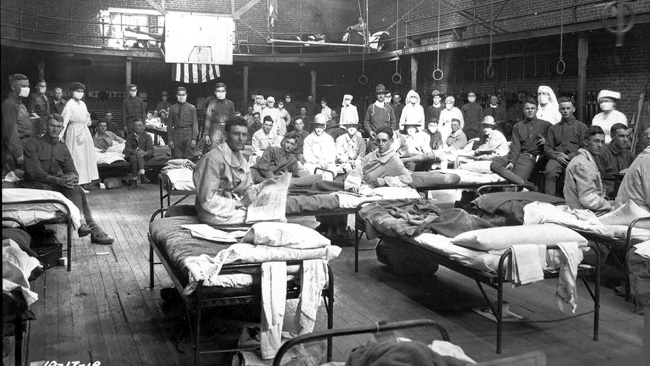SMU Lecture: Lessons from the 1918 flu epidemic
The lecture will be at 6 p.m. Thursday, Feb. 22, at the Gene and Jerry Jones Great Hall in SMU's Meadows Museum
DALLAS (SMU) - Scientists have learned much about the flu since the 1918 flu pandemic that killed an estimated 50 to 100 million people worldwide, says SMU medical anthropologist Carolyn Smith-Morris: "We have a strong arsenal - medicinal, mechanical and social - against infectious disease and its ravages. But as historians of this epidemic are fond of saying, we would be wise to remain cautious."
Smith-Morris will present a free public lecture, "The 1918 Flu Epidemic: A 2018 Perspective," at 6 p.m. Thursday, Feb. 22, at the Gene and Jerry Jones Great Hall in SMU's Meadows Museum, 5900 Bishop Blvd. A 5:15 p.m. reception will precede the event and reservations are requested at https://godbey2018_2.eventbrite.com
In 1918, with many suffering from the flu at the same, the most basic public services were crippled or even closed – including transportation, waste management and emergency rooms. Normal societal activities began to collapse, Smith-Morris says, and patients relied on family and friends for their care.
"If a new infectious tragedy of that scale were to hit America soon, one might wonder what our social and volunteer force would look like," Smith-Morris says. "More recent outbreaks, including the 2014 Ebola cases in Dallas, remind us that the way we relate socially and communicatively with each other has changed dramatically in 100 years. Stereotyping and public fear are fanned by a public addicted to 24-hour, entertainment-style ‘news’ shows and online optimization for sales and hits, rather than for public health information."
 Soldiers with the flu are hospitalized inside the U. of Kentucky gym in 1918. Photo courtesy of U. of Kentucky. |
However, another pandemic flu like the one in 1918 is unlikely, Smith-Morris says. Since 1918, scientists have discovered antibiotics, developed vaccines for a variety of infectious diseases, including the first for flu in 1945, and made both chemical and mechanical advances in the control of infectious agents.
Smith-Morris is SMU associate professor of anthropology. Her lecture is part of the Godbey Anniversary Lecture Series, sponsored by the Dedman College Interdisciplinary Institute.
###
22409
Media Contact:
Nancy George
214-768-7674 or 972-965-3769 (cell)
ngeorge@smu.edu